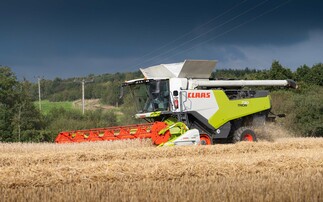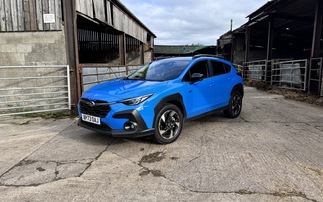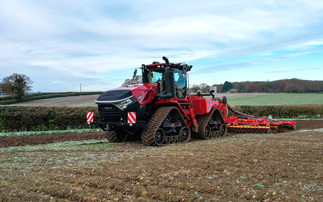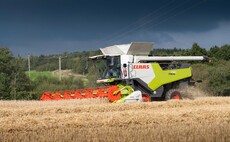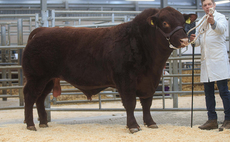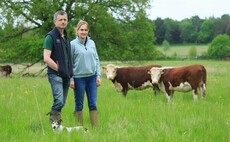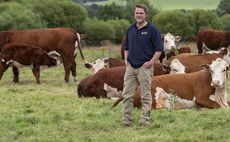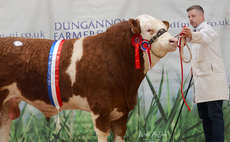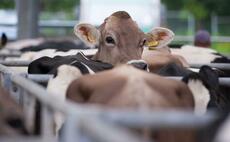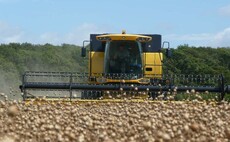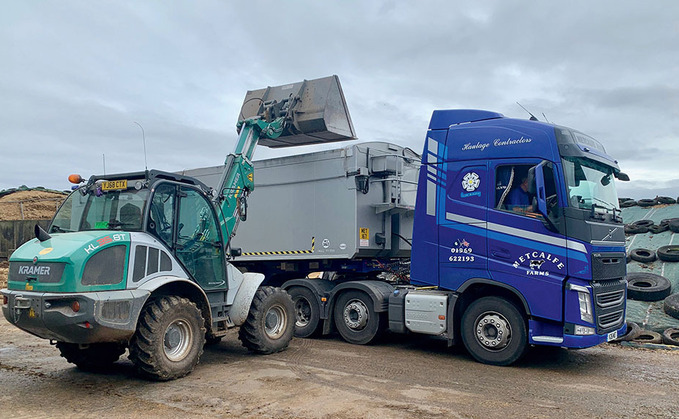
When does a small-wheeled loader outperform a telehandler? Jane Carley meets a farmer who reckons it is horses for courses
Many farms will choose one loading solution and have an alternative as back-up or for more specialist work. But having purchased a Kramer KL 35.8T four-wheel steer loader with central cab position to support a telehandler of the same brand, Yorkshire farmers J.G. Houseman and Sons are making more and more use of the four-wheel steer support machine.
Based near Ripon, North Yorkshire, the family milks 530 cows, with an average yield of 10,000 litres and breeds its own followers, having increased the size of the operation in recent years.
It is a busy workload, as there are also 600 fattening pigs on a ‘B&B' basis and 390 hectares of land, including 110ha of grass and 75ha of maize, plus arable crops.
The KL 35.8T is the latest in a line of no less than 16 Kramer machines on-farm, supplied originally by an independent dealer and latterly by Ripon Farm Services, as part of the German manufacturer's agreement with John Deere.
Purchased at the end of 2018, it clocked up 1,700 hours in its first year.
Bill Houseman, who farms in partnership with his father John and brother Richard, says: "It was supposed to do fewer hours than the telehandler, but it is the first machine anyone jumps on when something needs loading.
"We always had a wheeled loader, but added the telehandler when cow numbers increased to give the extra capacity for jobs such as stacking straw, which had previously been handled with a hired-in JCB Loadall."
text
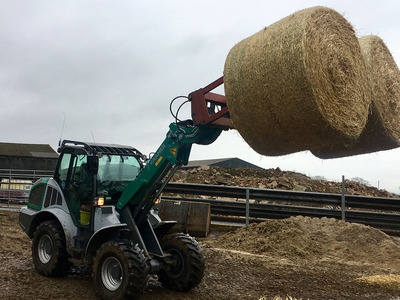
Purchasing policy has seen a shift, too. Where loaders used to be kept for three years, swapping every two years boosts resale value and fixes running costs by making use of the warranty.
Comparing the two Kramer machines reveals strengths for both, Mr Houseman comments.
"With a centre boom machine, such as the KL, you are sat in the middle and can see all around, which is important when you are working with cattle, for jobs such as bedding down.
"The compact size and four-wheel steer means it is much more manoeuvrable than a telehandler when mucking out tight sheds.
"We also use it to load lorries with grain in autumn, as accessing buildings when they are full can be tricky with a bigger machine."
However, he says it is less stable than a telehandler, having a narrow wheelbase, although he finds the four-wheel steer design more surefooted than pivot-steer machines he has tested.
"We do not use either loader for clamp building. A contractor takes care of silaging, as we are busy at that time of the year, but I have found in the past that clamp work is very hard on this type of machine."
pic
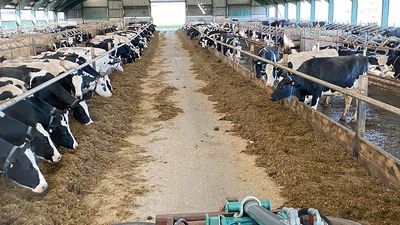
There is plenty of work for the KL. It is used to distribute 2,500 tonnes of sand per year for bedding down, and the farm makes 2,000 round straw bales a year and buys-in more.
Good visibility also comes in handy for pushing up silage to the sheds four times-a-day and for feeding cattle outside.
Mr Houseman says: "The telehandler is used to load the mixer wagon, but having the KL gives the peace of mind that we are covered in the event of a breakdown."
The sixth in a line of telescopic boom machines on-farm, the KL 35.8T has a more powerful Deutz engine than its predecessor at 100hp, and he says it is better on the road and more powerful when loading. A reversing fan keeps the engine cool on dusty jobs, such as loading bales.
He says: "I really like the hydrostatic transmission, as it is so easy to drive. When we have hired in Loadalls, I have to remember to stand on the brake.
"With the Kramer, you just take your foot off the throttle and stop. This one does 40kph on the road too, which is an improvement."
text
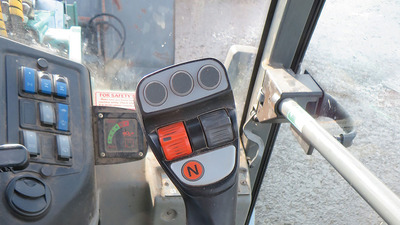
Mr Houseman addresses pros and cons of loading performance: "It obviously does not have the reach of a telehandler with a 4.5-metre loading height, but the boom has dampening, so it carries loads well without bouncing, and hydraulic quick attach means swapping between implements is easy.
"One sight frustration is that the implements are not interchangeable between the two loaders without using an adapter. Bucket capacity is a bit less than the telehandler too."
He says the 84 litres/minute hydraulic capacity is more than adequate for demanding implements, such has the AG dispenser.
The cab is another area the KL wins, he says. "With the boom in the centre, it can have doors on both sides and air flows through without sucking dust into the cab as a telehandler can.
"It is also a much more spacious and comfortable cab, and being higher up further increases visibility, especially over the boom."
text
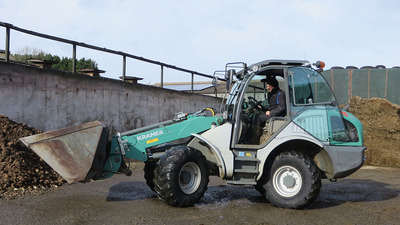
Mr Houseman says he did not bother with the extra cost of air conditioning this time, as it is generally driven with the doors open, giving natural ventilation.
Michelin Bibload industrial tyres, used in the past and fitted to the telehandler, were also passed over for agricultural tyres on this model.
He says: "They increase wear life, but are more costly and are not as good for field work."
Over the years, he has trialled a number of competitive makes, including seasonal hires of JCB Loadalls, and that original of the centre boom machine, the Matbro pivot-steer, but says he keeps coming back to the German build quality of the Kramer.
Breakdowns have been limited to the odd hydraulic pipe leak, taken care of under the warranty package, along with all servicing.
He says: "It is a big advantage having the dealer on the doorstep. Under the previous arrangement and through Ripon Farm Services, back-up has been unfailingly good. It is a factor you cannot ignore with livestock as they will always need feeding."
Loader specifications
- Model: Kramer KL 35.8T
- Engine: 100hp, Deutz, Stage 5
- Fuel tank: 120 litres
- Transmission: Hydrostatic, 30kph standard, 40kph optional
- Hydraulic pump capacity: 84 litres/minute
- Operating weight: 5,850kg
- Bucket capacity: 0.95cu.metres
- Tipping load: 3,500kg
- Load over height: 4.45m
- Wheelbase: 2.15m
- Height: 2.76m
pic

Verdict
Four-wheel steering manoeuvrability and rigid chassis stability combined with an elevated central driving position are the stand-out features of this relatively compact telescopic wheeled loader.










